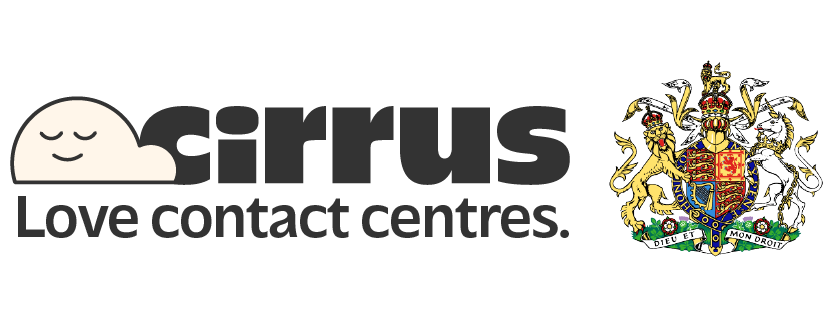Every contact centre starts the year with a plan. Forecasts, volumes, staffing models, software costs—it’s all laid out in good faith. But much like Jeremy Clarkson’s well-intentioned foray into farming, things rarely go to plan. You brace for seasonal peaks, only to be caught off guard by a viral customer complaint. You prepare for product launches, then deal with system hiccups that drive up average handle time.
Before long, that carefully balanced budget—approved, allocated and aligned with your forecast—starts to buckle under real-world pressure. And just like Clarkson battling soggy fields or a new tractor that doesn’t fit through the barn door, you’re left scrambling for a solution.
This article explores what happens when the contact centre equivalent of a broken cow gate throws your operation off course—and what leaders can do to make their budgets more resilient. From live insight tools and analytics to more considered investments in agent support and systems that can scale, we’ll show how building in flexibility doesn’t mean losing control. It means being ready when things change. Because they will.
When the plan meets the real world
You might start the year with a well-crafted budget and a steady forecast. But contact centres don’t operate in spreadsheets—they operate in reality. And reality doesn’t care about plans.
Sudden product issues, social media storms, weather disruption, or even a surprise promotion pushed by another department—any one of these can throw volumes off, extend call times, or clog up your self-service channels. And when that happens, everything costs more.
It’s a lot like Jeremy’s overly optimistic wheat harvest. On paper, it looked viable. But the moment real-world variables showed up—soil problems, bad weather, machine breakdowns—it became clear the model didn’t hold up. Same goes for contact centres: if your budget can’t bend, something else breaks.
Building a budget that expects the unexpected
This is where agile budgeting comes in. This approach doesn’t mean abandoning planning—it’s more about planning for change.
That means ditching rigid annual plans in favour of live models that can flex when needed. Think rolling forecasts updated monthly, scenario planning built around real call data, and budgets that include ‘buffer’ investment for tools or headcount when needed most.
And this isn’t just theory. Contact centres using live real-time analytics and predictive modelling can spot cost pressures building—longer queues, surging volumes, higher transfers—and respond before they turn into missed SLAs or rising attrition.
Don’t think of this as a nice-to-have—it’s a safety net. And in tough economic conditions, it’s often the difference between controlling spend and being told to cut it.
You don’t know what you don’t measure
Most contact centres know how much they spend. Fewer know why.
For example, if you see agent headcount rising but don’t understand why average handling time is up, you might assume the team isn’t efficient. But if you dig into analytics, you might find your systems setup is forcing agents to work across too many screens. Or that a change in policy has created confusion and callbacks.
Being able to connect costs to root causes is what separates budget crisis control from budget strategy. And the only way to get there is with the right visibility—one that combines real-time and historical insights, across channels, queues, and teams.
Where’s the money really going?
In a typical contact centre, labour eats the biggest chunk of the budget. And it’s easy to see why—people are your frontline. But when call volumes spike or handle times creep up, the go-to reaction is often to throw more agents at the problem. That’s like hiring more labourers on Clarkson’s Farm every time it rains, without asking why the field’s flooding in the first place.
Sometimes the real issue isn’t staffing—it’s inefficiency.
Maybe agents are wasting time toggling between systems. Maybe customers are being passed around because the bot isn’t set up to resolve common queries. Maybe the knowledge base hasn’t been updated in months. These things add time, cost, and frustration—but they don’t always show up in the budget. That’s where contact centre analytics earn their keep.
By measuring how time is spent—not just how much of it—you start to see where investment actually pays off. For example, if agent assist tools reduce handle time by 20 seconds per call, that’s a huge cost-saving you can take to the CFO.
And the earlier you can predict those gains, the better you can defend the budget when finance starts sharpening the red pen.
Budgeting for the tools you’ll wish you had later
The problem with agile budgets is that you sometimes have to fight for things that don’t feel urgent, until they are.
Investing in agent assist tools, predictive analytics, or intelligent routing might seem like a luxury when money’s tight. But when complaints pile up or your best agents burn out, it’s suddenly obvious why those tools mattered. At that point, it becomes a service issue, a brand issue, and a retention issue.
That’s why a good budget is more about readiness than efficiency.
Analytics can help here too. If you can model how much churn a tool might reduce—or how many calls it could deflect—you’re not making an emotional case for investment. You’re making a financial one.
Tell the right story to win the right support
In Clarkson’s Farm, every episode is a masterclass in persuasion. Jeremy wants to buy a new tractor. Kaleb thinks it’s too much. The accountant panics. And somehow, despite the eye rolls, the thing ends up in the barn.
That’s budgeting in the real world. You’re trying to convince people as much as you are crunching numbers. And when things change fast, the best way to protect your contact centre budget is to show what’s coming, what it’ll cost if you don’t act, and what difference the right investment could make.
You don’t need to apply scare tactics. It’s more about giving context and clarity. A rolling forecast that shows agent churn on the rise. A scenario plan that models the impact of a system failure. A heat map that pinpoints where calls are stacking up due to poor self-service. These represent stories that decision-makers can understand.
And the better you tell those stories, the less likely you are to get blindsided by last-minute cuts.
Give your budget room to breathe
Budgets often get signed off as if the year ahead will behave. But it won’t. That’s why it’s crucial to build in the ability to flex—whether that’s holding back 5–10% for contingency, or creating scenarios for high, medium, and low demand.
This doesn’t mean you expect failure. Great budget management expects the unexpected.
Because when contact centres get hit with unpredictable spikes—from a product recall, a new campaign, a snowstorm that grounds deliveries—waiting for next quarter’s review won’t cut it. You need the ability to move budget now. Agile planning makes that possible, but only if it’s designed in from the start.
A final thought from the farm
Jeremy Clarkson didn’t plan for half his fields to flood. Or for the council to reject his restaurant. Or for his pigs to escape (again). But over time, he learned to expect the unpredictable and build the farm around it.
Contact centres aren’t that different. You can’t predict every storm, but you can plan with enough flexibility to stay in control. That’s what agile budgeting is really about. It’s not just a spreadsheet exercise. Think of it as the calm before the storm—the backup plan when calls spike, and the confidence to keep delivering solid service, even when nothing’s going to plan.
Want to budget better—without the drama?
From live analytics and predictive insights to tools that help you prove ROI and flex when things change, Cirrus helps contact centre leaders build budgets that work in the real world.






